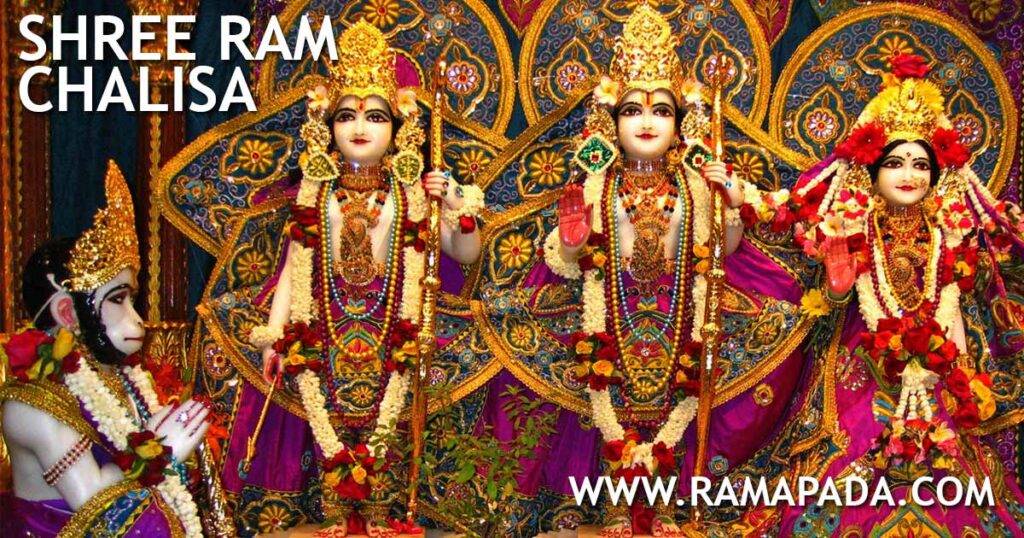Shree Ram Chalisa is a forty-verse devotional hymn that honours Lord Ram, the embodiment of righteousness, compassion, and ideal kingship. Rooted in the Bhakti tradition, it celebrates his divine virtues and heroic deeds, offering devotees a path to spiritual strength and moral clarity.
Spiritual and Cultural Significance
- Forty Verses of Devotion: Each verse praises Ram’s qualities—his valour, humility, and unwavering commitment to dharma.
- Symbol of Ideal Living: Devotees chant the Chalisa to cultivate truthfulness, courage, and inner peace.
- Festive Recitation: Commonly recited during Ram Navami, Diwali, and daily worship, it deepens one’s connection to Ram’s divine presence.
- Ethical Resonance: The hymn reinforces values like loyalty, compassion, and self-discipline—hallmarks of Ram’s life.
Opening Verses in Sanskrit (Devanagari Script)
Here are the first few verses of Shree Ram Chalisa:
श्रीराम चालीसा
श्री रघुवीर भक्त हितकारी।
सुनि लीजै प्रभु अरज हमारी॥
निशि दिन ध्यान धरै जो कोई।
ता सम भक्त और नहिं होई॥
ध्यान धरे शिवजी मन माहीं।
ब्रह्म इन्द्र पार नहिं पाहीं॥
दूत तुम्हार वीर हनुमाना।
जासु प्रभाव तिहूँ पुर जाना॥
These verses invoke Ram as the benefactor of devotees and the divine protector whose glory transcends even the gods. His connection with Hanuman and his role as the upholder of dharma are central themes.
Core Mantra from Shree Ram Chalisa
One of the most revered mantras associated with Lord Ram is:
श्री राम जय राम जय जय राम ॥
Meaning:
“Victory to Lord Ram, the embodiment of truth and virtue.”
This Tarak Mantra is considered a liberating chant—simple yet profound. Devotees use it in meditation, kirtan, and daily prayer to invoke Ram’s grace and dissolve inner turmoil.
Devotional Practice and Impact
- Daily Recitation: Cultivates mental clarity, emotional resilience, and spiritual grounding.
- Ritual Integration: Often paired with Ram Aarti, Tulsi offerings, and readings from the Ramayana.
- Spiritual Alignment: Encourages dharmic living and devotion, aligning one’s actions with higher purpose.

